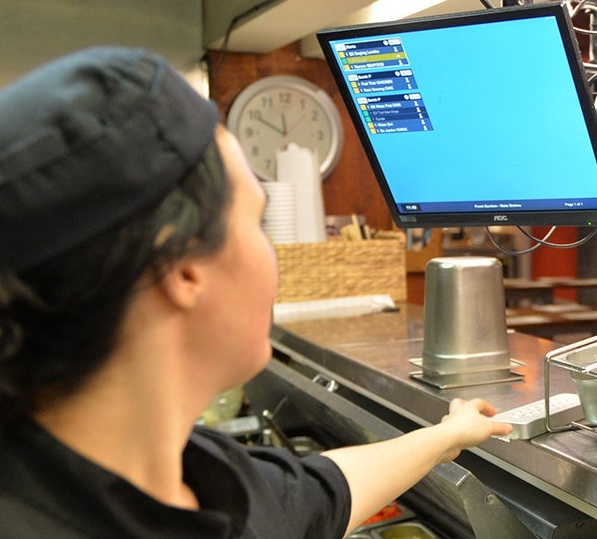Among the top customer complaints in the restaurant industry are inaccurate orders and slow service. People do not enjoy waiting, especially when they are hungry. Hungry can turn to “hangry” quickly, and lead to unhappy customers. A sandwich cooked too little or too much, or missing cheese, or having cheese, could easily upset a customer, especially when paired with a long wait time.
In the digital age we live in, unhappy customers are more likely to turn to social media sites like Yelp! or Facebook than quietly fill out a comment card to vocalize their dissatisfaction. Not only may they not come back, but their bad reviews may deter potential customers who were reading online reviews to help decide where to eat.
Before the days of the digital POS, cash registers were how customers would pay for their meals. Servers would scribble orders down on a piece of paper and give them to the kitchen. The kitchen staff would have to spend time deciphering the handwriting with all of the various modifications and instructions. When the order was complete, they would ring a bell and yell “order up!” The server would have to pay attention and get to the food before it was cold. This method leaves a lot of room for error.
Once today’s point of sale systems became mainstream, the option sprung up of being able to print tickets. The server would input the orders into the POS, using modifiers and adding instructions, and then print the order, called a “ticket.” This got rid of the need to read scribbles, enhancing the server-kitchen communication. This method is still used today, but is not as efficient as a Kitchen Display System (KDS).
KDS are screens (think computer or TV) that digitally display orders directly from the point of sale, adding a direct stream of communication from server to kitchen. KDS eliminate paper costs and visually display orders. Kitchen staff can more easily keep their heads above water during a rush without having to scramble to read bits of paper.
Zonal KDS integrate with the POS system, making it simple to add modifications and food allergy special instructions. The KDS screens are easily customizable and have color coded options to insure accuracy. Kitchen Display Systems allow for reporting information which isn’t available with handwritten or most printed tickets. Managers can track order times during peak hours and see what needs improvement. It can help monitor the overall efficiency of the restaurant.
KDS are a modern way for servers and kitchen staff to communicate orders to enhance efficiency and accuracy. Customers want their orders to be timely and correct. Kitchen Display Systems are a great alternative to handwritten and printed tickets. KDS takes advantage of technology and integrates with POS to give customers an overall better experience.

